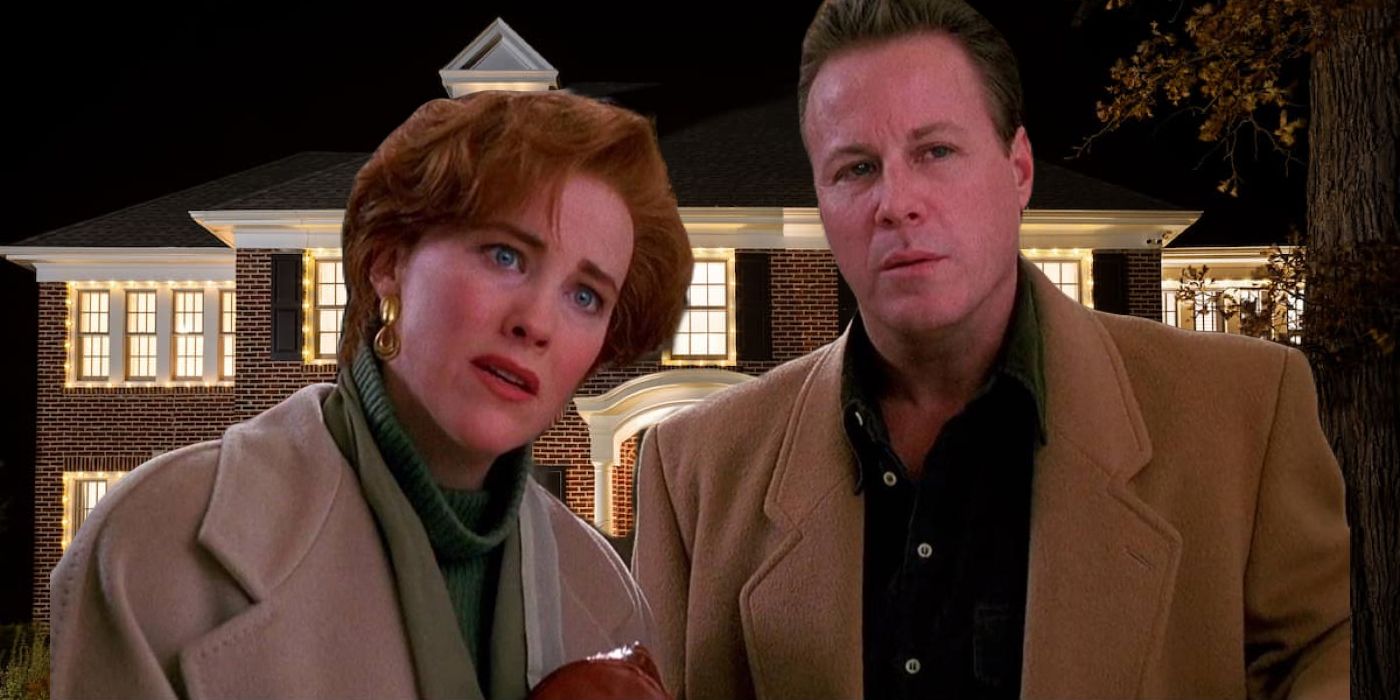In a recent interview with The Hollywood Reporter's Awards Chatter podcast, Columbus explained that Kate was a successful fashion designer. A detail subtly hinted at in the film is the mannequins first seen in the basement, which were later used to create Kevin's fake holiday party. While Peter’s exact job remains undisclosed, the filmmaker suggested he might have worked in advertising, a field reflective of screenwriter John Hughes’ background. Moreover, Columbus debunked a long-standing fan theory that Peter McCallister was involved in organized crime. Check out Columbus' insight below:
“Back then, John and I had a conversation about it, and we decided on what the jobs were. Catherine O’Hara’s Kate McCallister was a very successful fashion designer, as suggested by the mannequins in the family’s basement. As for John Heard’s Peter McCallister, he can’t say for sure. The father could have, based on John Hughes' own experience, worked in advertising, but I don’t remember what the father did. He was able to rule out one profession, though, which people online speculated might have drawn criminals Harry (Joe Pesci) and Marv (Daniel Stern) to the McCallister home in the first place: not organized crime — even though there was, at the time, a lot of organized crime in Chicago.”
What This Means For Understanding the McCallisters in Home Alone
Kate & Peter's Jobs Make A Lot Of Sense, Especially In The Time Period
Columbus’ revelations enlighten the longstanding discussion around the McCallister parents' careers, and how they could afford to live in the 1920s Colonial Brick mansion on top of taking nine people to Paris for Christmas. Kate's career as a fashion designer aligns with the film’s visual aspect, especially with the mannequins Kevin uses to deter the Wet Bandits, Harry and Marv.
Related
One of the most asked questions when rewatching Home Alone is what the McCallister parents did for a living to afford their house and trips.
Moreover, Peter McCallister’s alleged career in advertising is a plausible scenario for the family’s socioeconomic status. In the late 1980s and early 1990s, advertising was a lucrative field, particularly in a major city like Chicago, Illinois. Contextually, this explains the McAllisters' ability to maintain their lifestyle realistically.
Over time, Home Alone viewers have taken to the internet to toss around theories about Peter's profession, particularly involvement in organized crime. Now that Columbus has debunked this theory, it paints Peter's character in a new light. The theory wasn't far-fetched since organized crime was a topic of cultural fascination in 1980-1990s Chicago. However, Columbus' clarification ensures Home Alone remains grounded in the relatable motions of an ordinary family, even amidst its comedic hijinks.
Our Take on Home Alone’s Lasting Attention to Background Details
This Brings Some Relief
Columbus’ comments illustrate the thoughtfulness that went into crafting the McCallister family’s lore. By providing context for Kate and Peter's professions, the director enhances the story of Home Alone without detracting from its beloved humor and charm. While the internet has speculated on these details for many years, his insights are a reminder that even lighthearted, holiday films can incorporate layered storytelling.
Source: The Hollywood Reporter's Awards Chatter podcast
Your changes have been saved
Home Alone tells the story of Kevin McAllister, an eight-year-old who is left behind in his Chicago home when his family flies to Paris for the holidays. Not only must Kevin keep himself safe while his mother flies back across the world, but he must protect his home from the Wet Bandits - serial burglars who are targeting the McAllister House. Kevin must use every trick in the book to keep the Wet Bandits from stealing Christmas before his mother returns.
Release Date
November 16, 1990
Runtime
103 minutes
Cast
Macaulay Culkin
, Joe Pesci
, Daniel Stern
, John Heard
, Roberts Blossom
, Catherine O'Hara
Director
Chris Columbus
Budget
18 million
Studio(s)
20th Century
Distributor(s)
20th Century

 Custom image by SR staff
Custom image by SR staff












 English (US) ·
English (US) ·